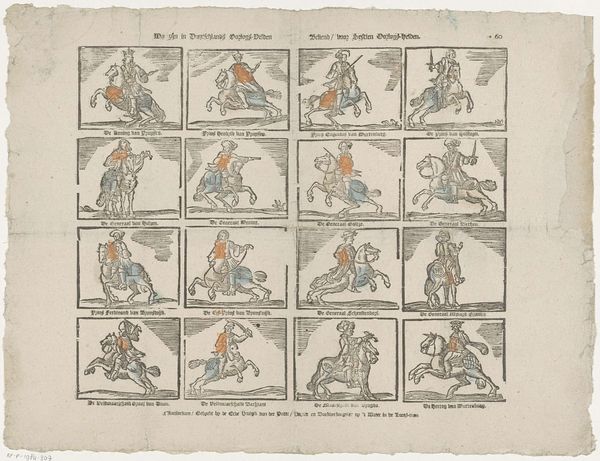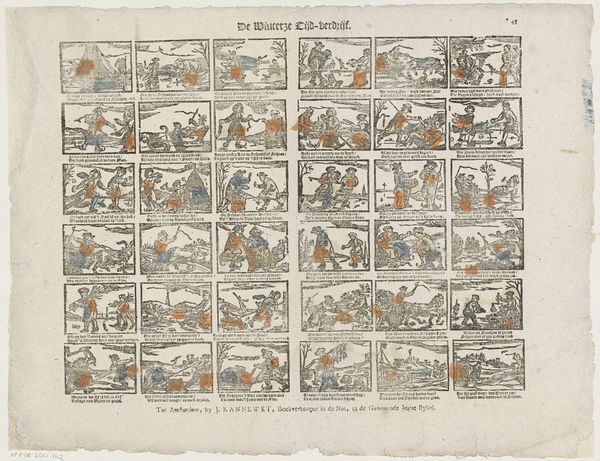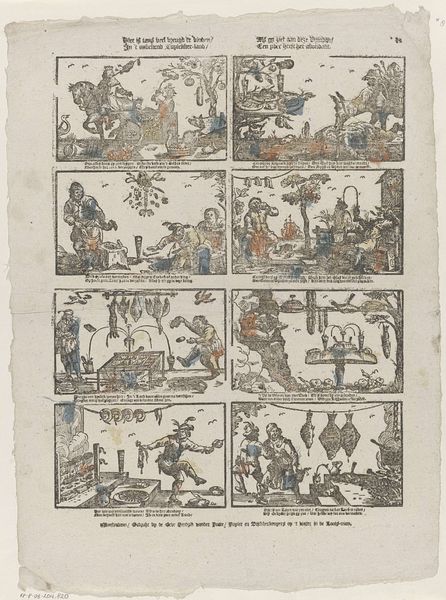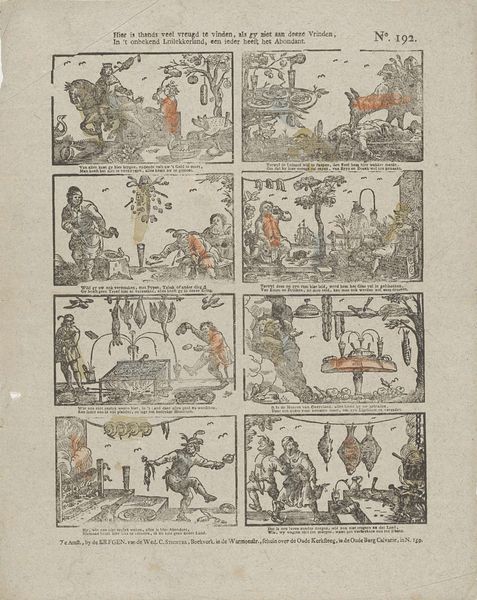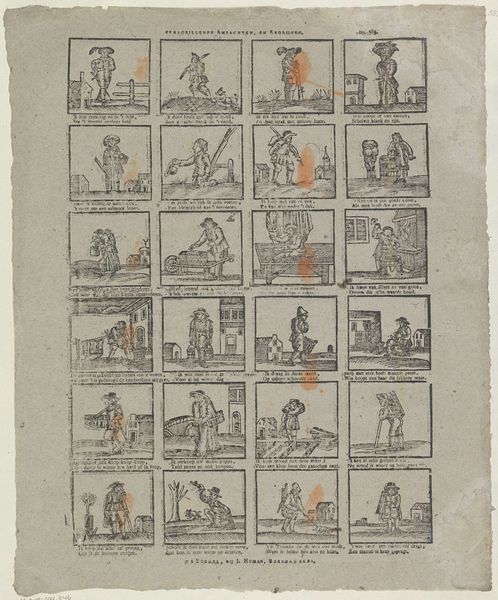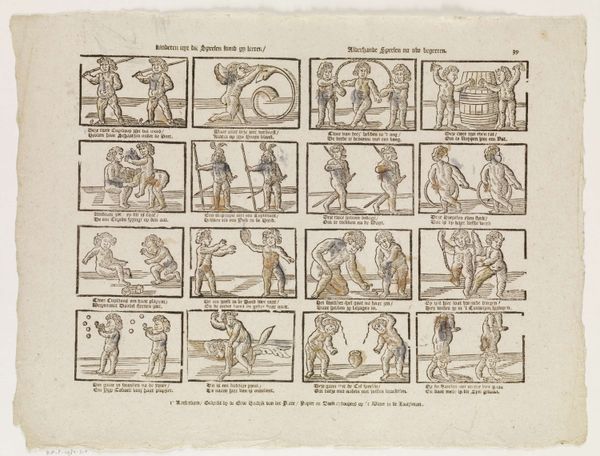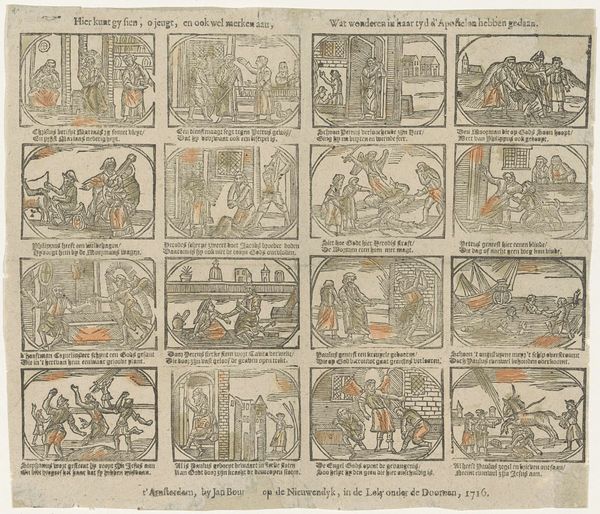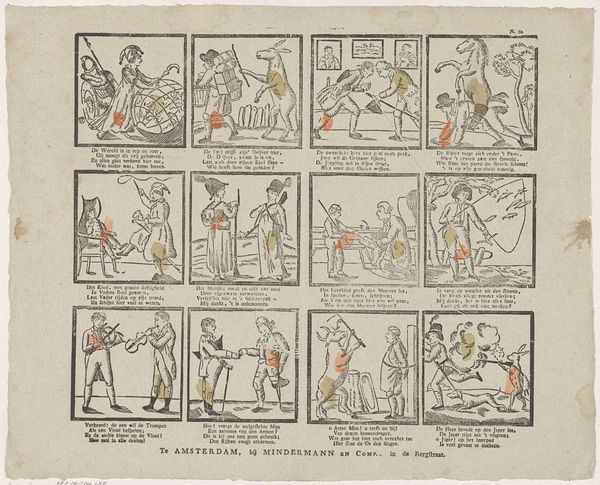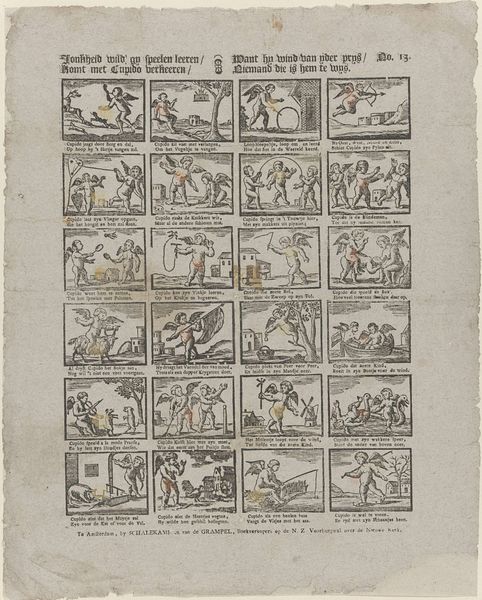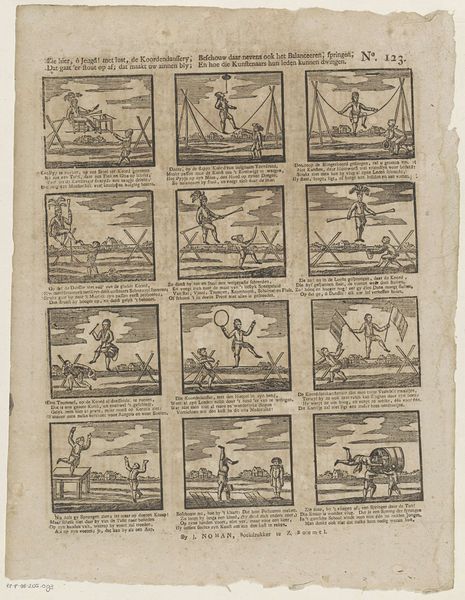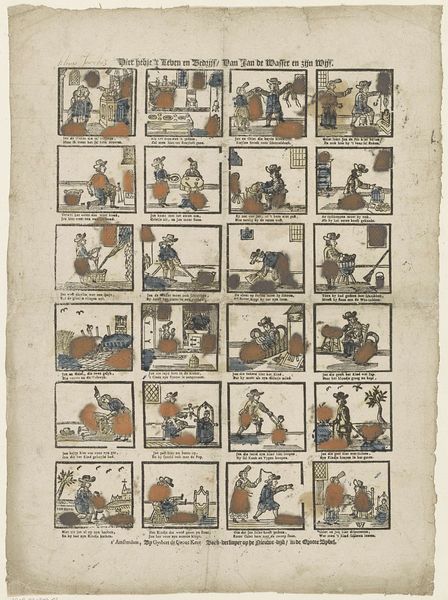
Zie hier hoe deez' paarde-rijders springen, / En zich in duizend bogten wringen, / Zoo wagen zij hun leven wel, / Maar leven toch van 't hachlijk spel 1814 - 1848
0:00
0:00
drawing, print, etching, pen, engraving
#
drawing
#
comic strip sketch
#
quirky sketch
#
narrative-art
# print
#
etching
#
cartoon sketch
#
figuration
#
personal sketchbook
#
sketchwork
#
ink drawing experimentation
#
pen-ink sketch
#
sketchbook drawing
#
pen
#
genre-painting
#
storyboard and sketchbook work
#
academic-art
#
sketchbook art
#
engraving
Dimensions: height 332 mm, width 411 mm
Copyright: Rijks Museum: Open Domain
Editor: This print, dating from sometime between 1814 and 1848, is called "Zie hier hoe deez' paarde-rijders springen..." by I.I. de Lanier. It’s an etching, a series of small vignettes depicting horse riders performing tricks. I'm struck by how repetitive it is; what’s the story behind it? Curator: Notice how the etching technique, requiring repetitive actions and manual skill, mirrors the repetitive actions of the performers. Consider the social context: prints like this were often mass-produced and sold cheaply, contributing to a growing culture of entertainment and leisure in Amsterdam. Do you think the accessibility of this artwork influenced its subject matter? Editor: That’s interesting…so, this was “popular” art? Meant for a wider audience than, say, a formal oil painting hanging in a wealthy person's home? Did that influence the choice of imagery—horse riding as entertainment? Curator: Precisely. This wasn't meant for an elite audience. Its materiality speaks to a broader reach. Think about the labor involved in creating such prints, the workshops and distribution networks, the investment for the person buying. It makes it accessible. What is it conveying, that the work’s medium becomes more accessible for circulation amongst different socioeconomic strata of people? Editor: So, by using this specific method, and distributing these prints so widely, it speaks to a bigger crowd… It shows a democratization of both creating art, depicting a public form of entertainment that mirrors a shift of leisure pursuits as well as its own consumption to a mass consumer. I never really considered the materials used in artwork like this before. Curator: Considering these material factors allows us to view the work not just as an aesthetic object, but also as a product of a specific economic and social system.
Comments
No comments
Be the first to comment and join the conversation on the ultimate creative platform.
